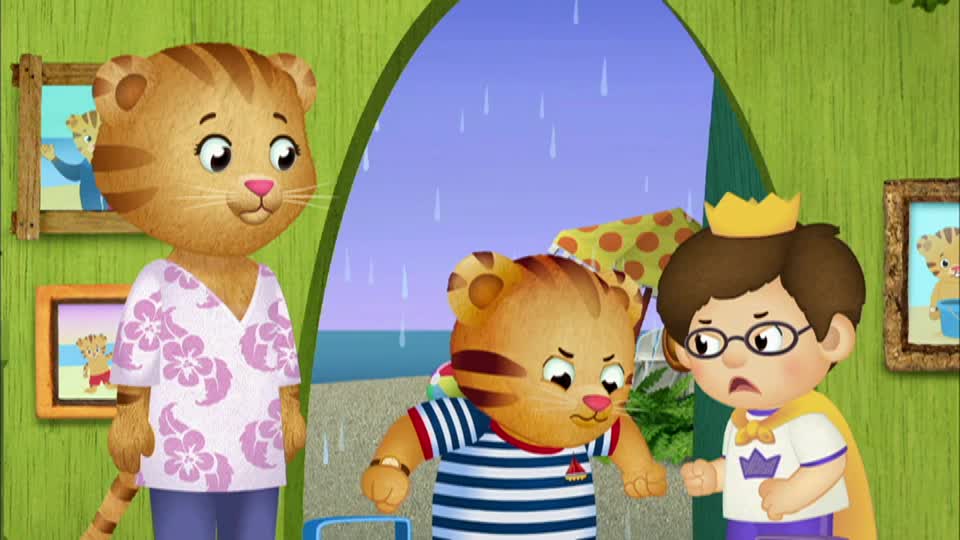Being a parent often involves learning mountains of information you never thought you'd need to know – from the names of every Paw Patrol character to how to function on less than three hours of sleep. Occasionally, this parental learning curve delivers some gems that even apply to the world beyond the playground.
As a nonprofit consultant and mom of two kids under the age of five, I've sifted through the tantrums, biting and potty training to find those pearls of wisdom for you. I'm happy to share the top five lessons about strategic planning I've learned from two-year-olds... and you don't even have to watch a single episode of Caillou, I promise.
Ask why, why and why
Young children are notorious for asking "Why?" about everything under the sun, and I'll admit I've surrendered to the cop-out answer "Because I said so!" more than once. But I try my best to approach these benign interrogations as a mental (and endurance!) challenge. I've noticed the difficulty increases significantly with each level of questioning, and it generally takes three "why's" to really get to the heart of the matter. Also, I usually need to consult Google by the third question.
Strategic planning should involve lots and lots of questions for your board of directors, staff, donors, volunteers and constituents. The most enlightening conversations start with "Why?" and involve several follow-up "Why?" questions.
Asking "Why?" can be scary because it might disrupt long-held assumptions about your organization's purpose, audiences, program delivery and more. It's important to encourage everyone to be open and candid with their insights. One-on-one interviews can provide a good forum for a deep dive into "Why?" questions in a safe environment. Often you'll reach a "Why?" question that requires research or data gathering (like my toddler-initiated Google searches about why the sky is blue), so use that as the opportunity to do your homework and then regroup with everyone to put the pieces together.
Rigorous "Why?" questions in strategic planning will help guide your way forward and will also help you explain how (and WHY!) you arrived on this path.
Be curious and try a new approach
It's an understatement to say kids are curious about everything and will often try new things that would never occur to adults. My daughters open my mind to new food combinations (oranges dipped in hummus!) and new uses of household items (a bottle cleaner can be a hairbrush!). An open mind, an active imagination and a blind eye to why something might not work can free you to experiment in ways you never before considered.
Strategic planning is the place and the time to ask the questions you’ve always wondered, consider new options, play out possible scenarios – and even soft sound initiatives with various stakeholders to see if they have real potential. A common trap in strategic planning discussions is to reject an idea based on assumptions before it’s fully explored. I’ve seen groups land on revolutionary concepts by simply creating an opportunity for wide open brainstorms without analysis or judgment, and then using an iterative process to test their viability. Applying design thinking concepts to the strategic planning process is one way to take your explorations to the next level.
Engage and be present
I am continually amazed at my kids’ ability to focus when they’re doing something they love and the depth of learning that can come from those experiences. I’ve seen them create elaborate princess make believe games that hold their attention for hours, oblivious to the rest of the world. I’ve also been shocked to observe them turn into mini zombies in front a TV show (bad mama moment!) – but also remember every minute plot twist and character nuance for weeks to come. It sounds obvious, but simply being present and creating the opportunity for your team to focus and listen can make a difference in the quality of your planning.
A retreat is not a pre-requisite for successful strategic planning, but spending a full day together at a neutral (possibly even inspiring!) location with limited distractions can enable a deeper level of engagement and richer brand of conversation. While many organizations limit strategic planning retreats to the board of directors and executive director, there can be tremendous benefits to including other stakeholders such as additional staff members, donors, volunteers and constituents in select parts of the agenda.
Be a third-person commentator
My youngest daughter, Alice, speaks almost exclusively in the third person, and spends most of her days providing a roaming play-by-play on the world around her. Visit my house at 6:00 a.m. and you'll probably hear, "Alice is awake! Alice wants to play!" And later at the window, "Alice sees birds! Birds say 'tweet tweet' to Alice!" I’m not suggesting third-person communications is the way for you to operate, but adopting that kind of outside-your-own head perspective can offer the objectivity you need to rationally and wisely weigh options and make decisions in strategic planning.
One way to gain the value of a third-person commentator is to hire a facilitator to lead your retreat or guide your entire strategic plan development. The best strategic planning processes involve tough questions as you get to the heart of the matter for your organization – but it can be impossible for staff or board members to productively lead those discussions. A skilled facilitator will help you navigate those tough conversations, find common ground, and build a stronger team along with a successful plan. If working with an external facilitator is not possible, you can also gain some benefits from designating someone internally who will serve in the facilitator role and educating your team about how to use active listening skills to encourage constructive discussions.
Use the word "NO" freely
It goes without saying that “No” is one of the most frequently uttered words in my house as I try to convince my daughters on a daily basis that they need to go to sleep, eat some vegetables and refrain from pulling their sister’s hair. Mommy blogs tell me they’re just trying to assert their autonomy and create boundaries in their little worlds… which doesn’t always make it easier for me to handle, but does make me realize there can be a positive use for a strategic “no.”
I often tell organizations that the most important thing you can do in a strategic planning process is decide what you are NOT going to do. In the nonprofit sector, we are driven by our missions and our hearts, so we often find it incredibly difficult to decide not to pursue a program or initiative when we see a need. For some organizations, resource constraints are the only reason to decline an opportunity. But trying to do it all inevitably dilutes our impact and can easily lead to mission creep. If your organization can embrace the concept of saying “no” as part of your planning, the next step is to craft a process to arrive at that “no” list in a thoughtful, positive and mission-supporting manner. Feel free to start by banning tantrums – it doesn’t always work for two-year-olds, but hopefully will work for your leadership team.
My final piece of advice as a battle-weary mom and consultant: The next time you babysit your nephew who sometimes sticks raisins up his nose, consider asking him about your latest nonprofit strategy issue. You might learn another gem to add to my list!
(Gratitude to Rose and Alice, who continue to give me the best source material for all life and work situations!)

